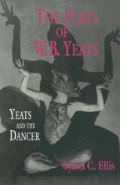Abstract
Even a dance which appears free and spontaneous to an onlooker is likely to involve an element of control, of balance. It is more knowing than it seems, for technique can do the work of prudence. Quite frequently, in Romantic writing, there comes a vertiginous moment where thought seems to be passing out of control. Romantic experience involves encountering the Infinite, but this is strictly beyond the scope of the human mind, and threatens it with a kind of chaos. If there are no boundaries to be established between the self and the rest of Nature, then the mind can be drawn with headlong speed to the very limits of the available world. From this it shrinks. …
Access this chapter
Tax calculation will be finalised at checkout
Purchases are for personal use only
Notes
Joan Scanlon and Richard Kerridge, ‘Spontaneity and Control: The Uses of Dance in Late Romantic Literature’, Dance Research, VI: i, (Spring 1988), pp. 30–44.
Author information
Authors and Affiliations
Copyright information
© 1999 Sylvia C. Ellis
About this chapter
Cite this chapter
Ellis, S.C. (1999). Conclusion. In: The Plays of W. B. Yeats. Palgrave Macmillan, London. https://doi.org/10.1007/978-1-349-27224-2_5
Download citation
DOI: https://doi.org/10.1007/978-1-349-27224-2_5
Publisher Name: Palgrave Macmillan, London
Print ISBN: 978-0-333-74878-7
Online ISBN: 978-1-349-27224-2
eBook Packages: Palgrave Literature & Performing Arts CollectionLiterature, Cultural and Media Studies (R0)

